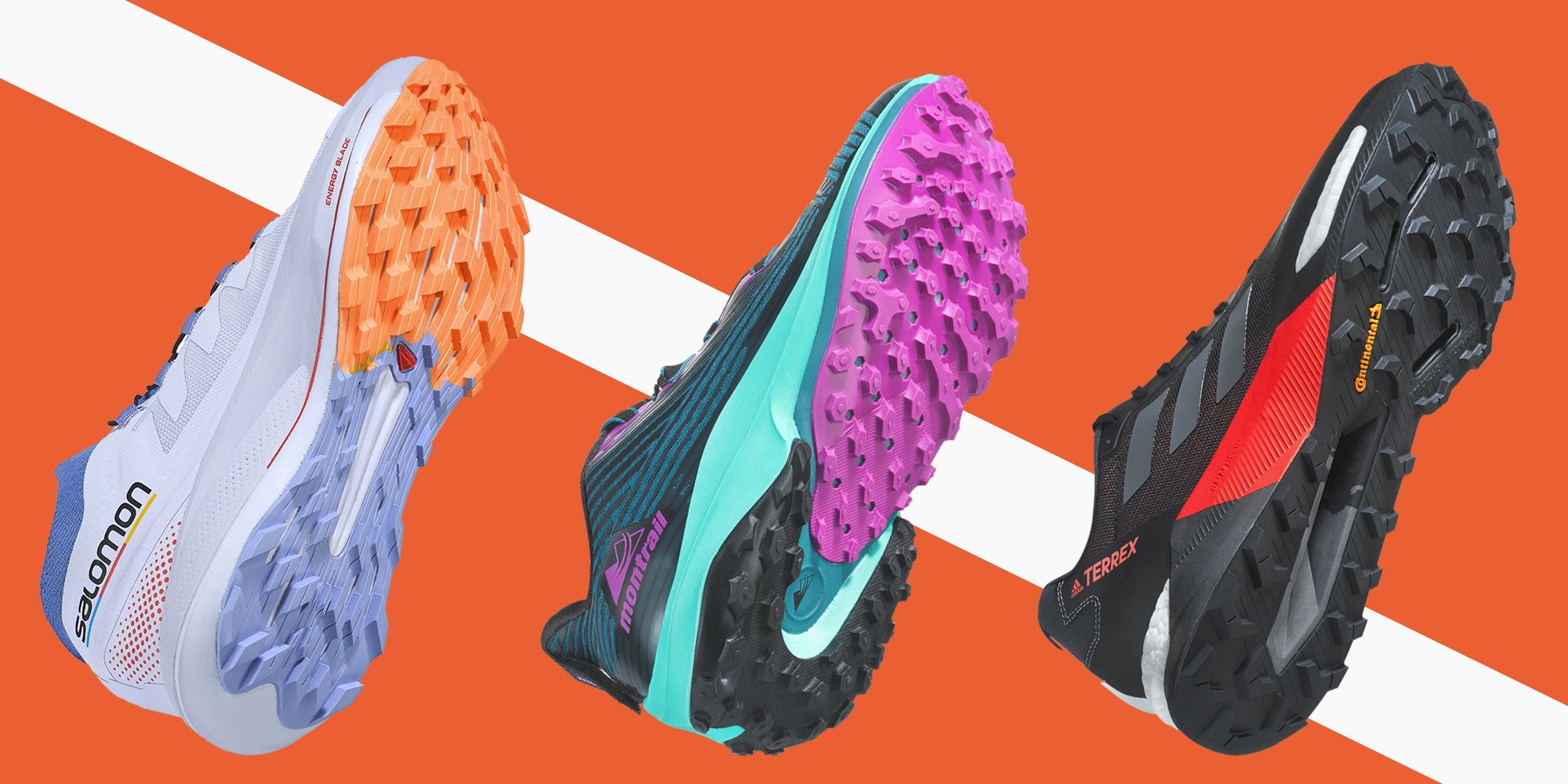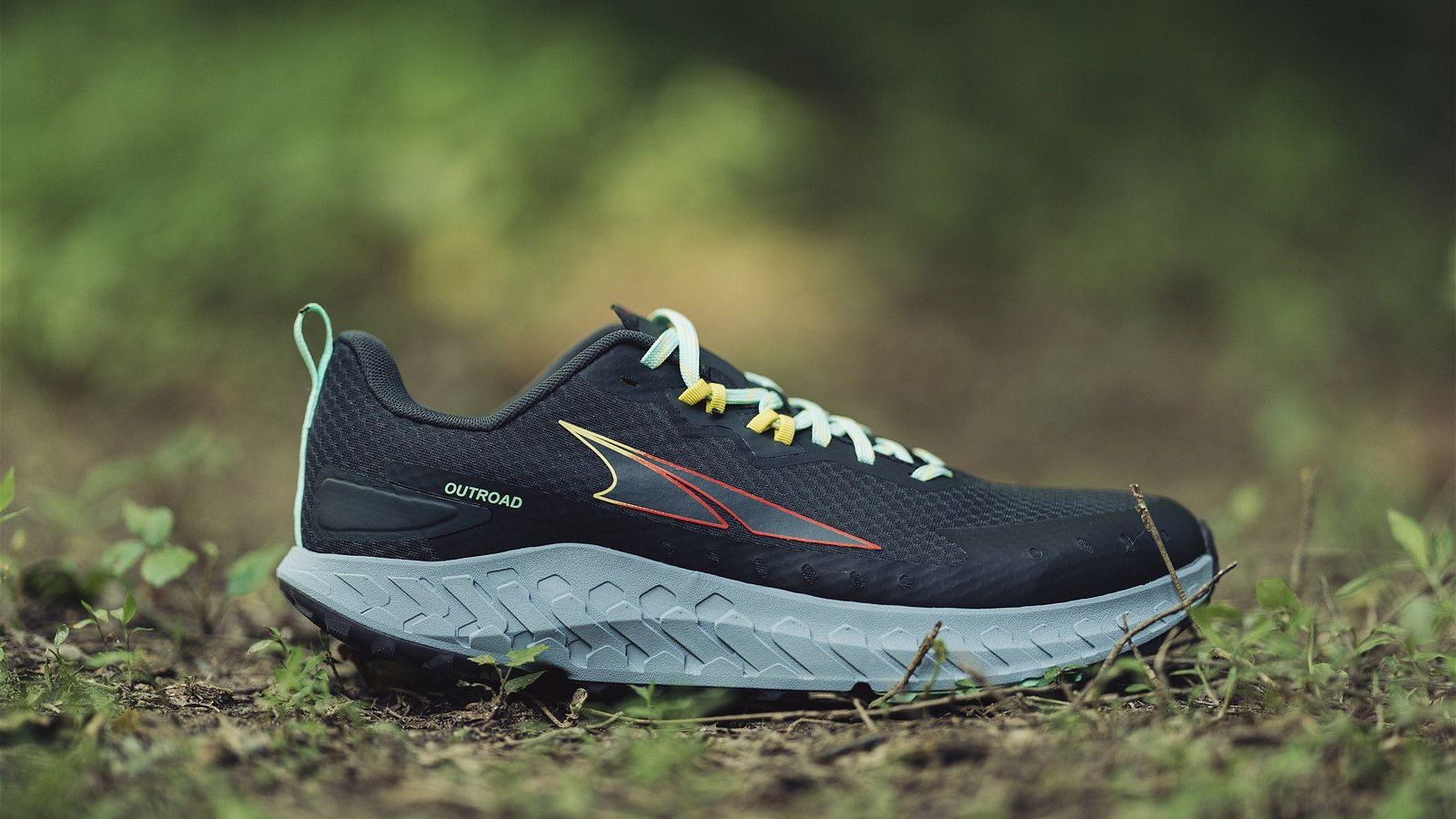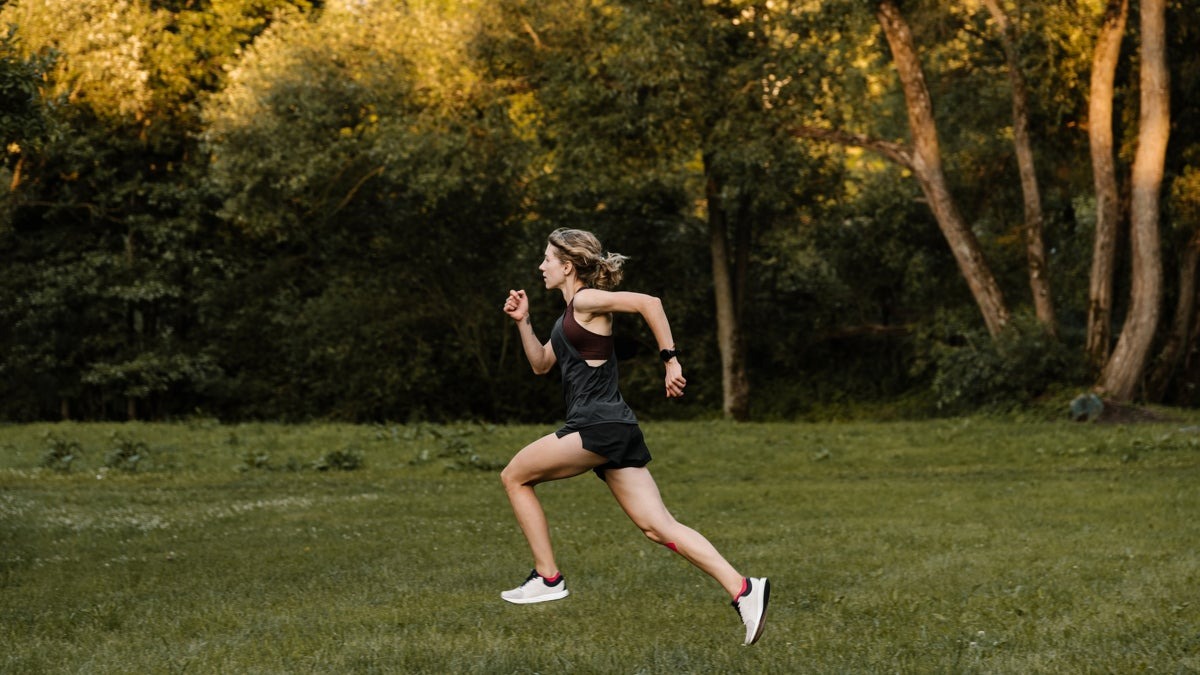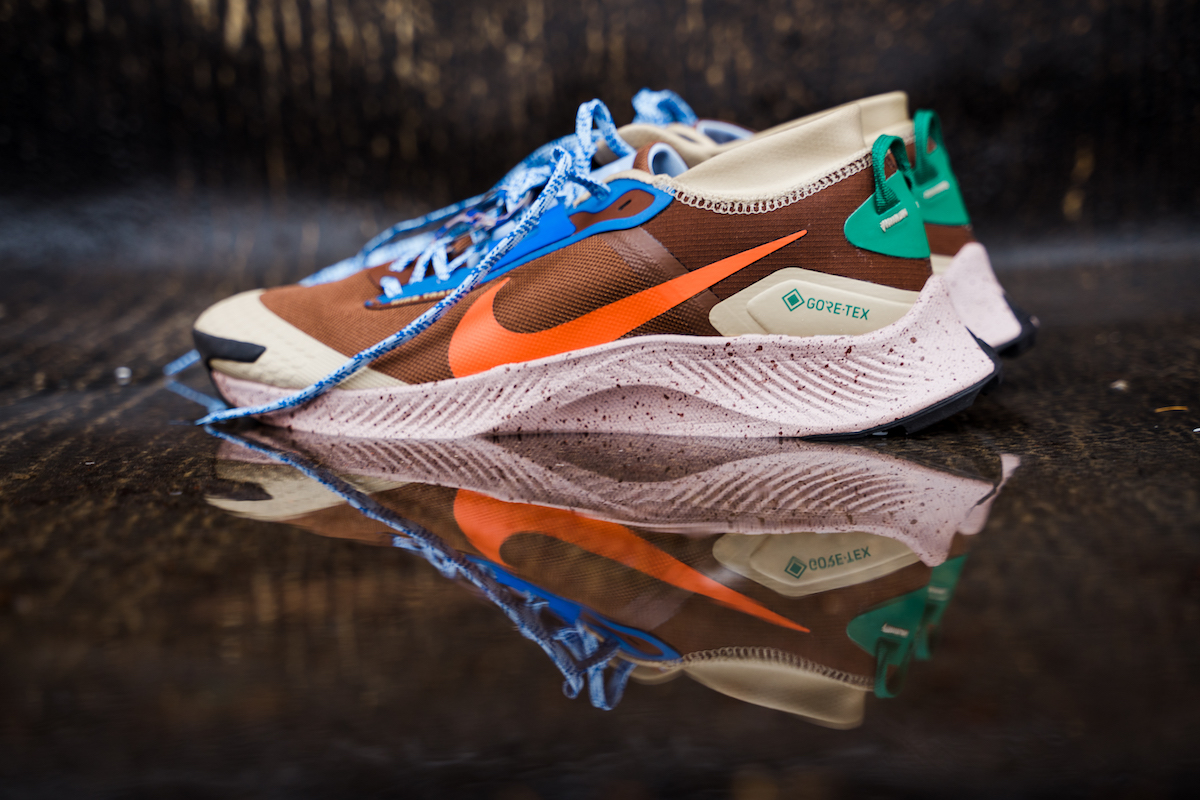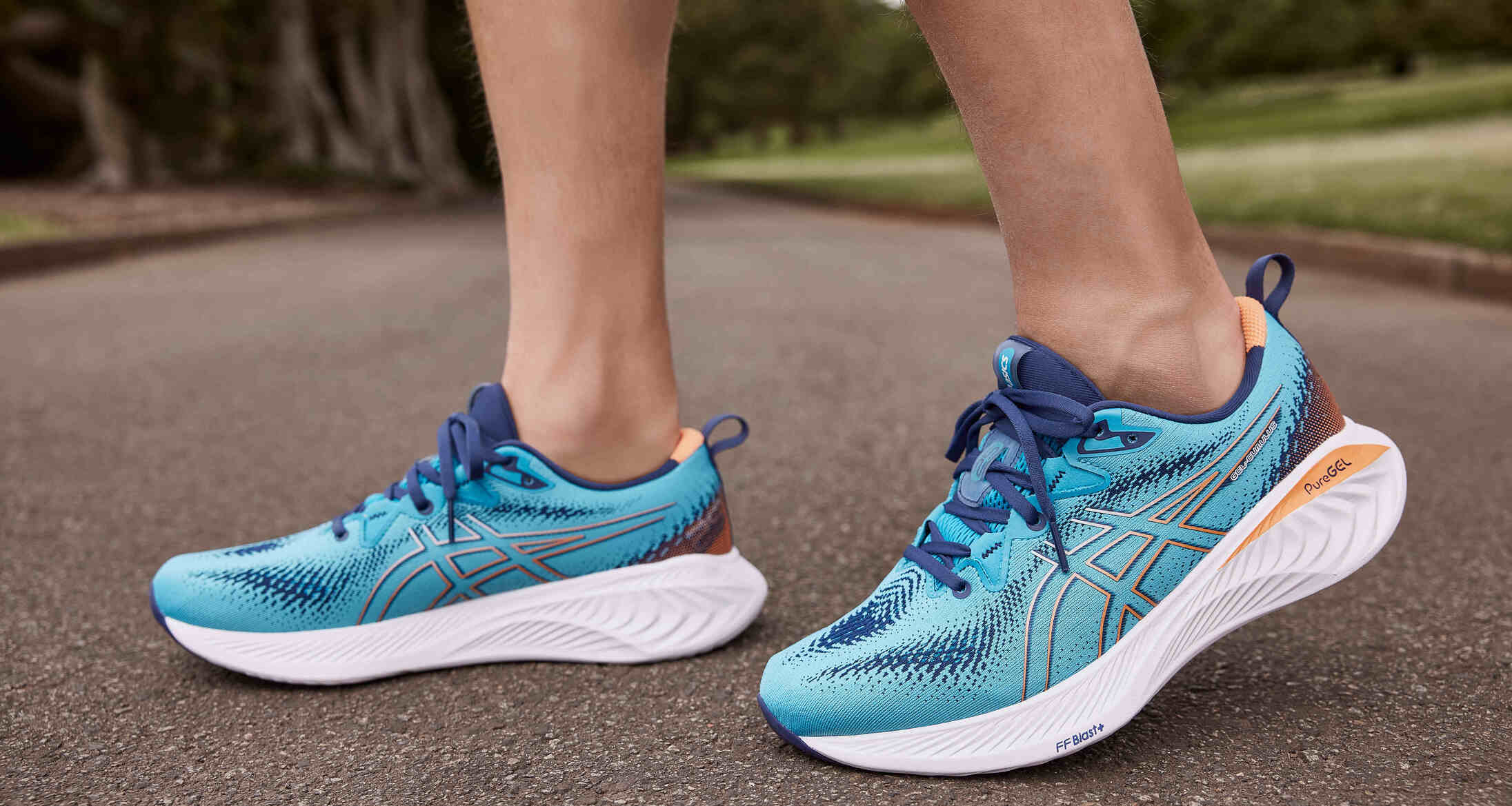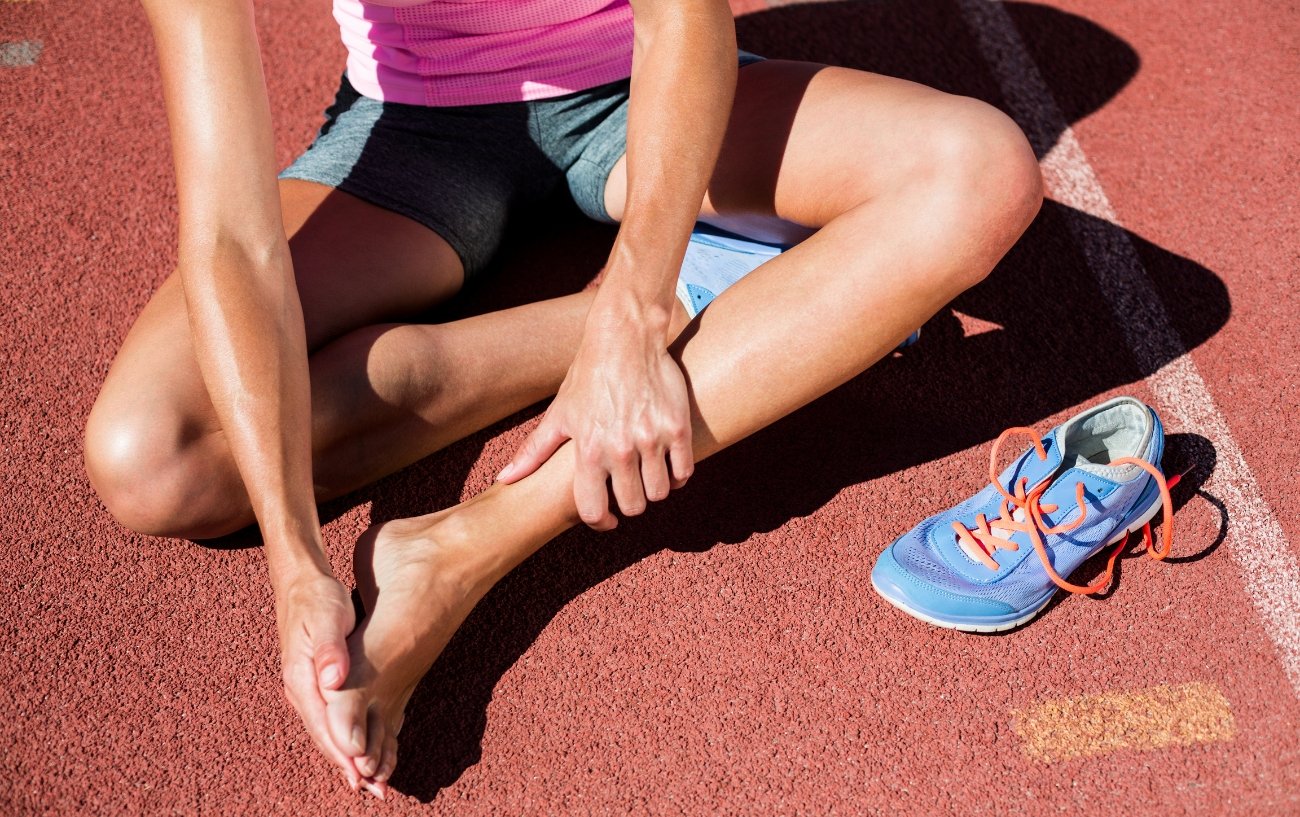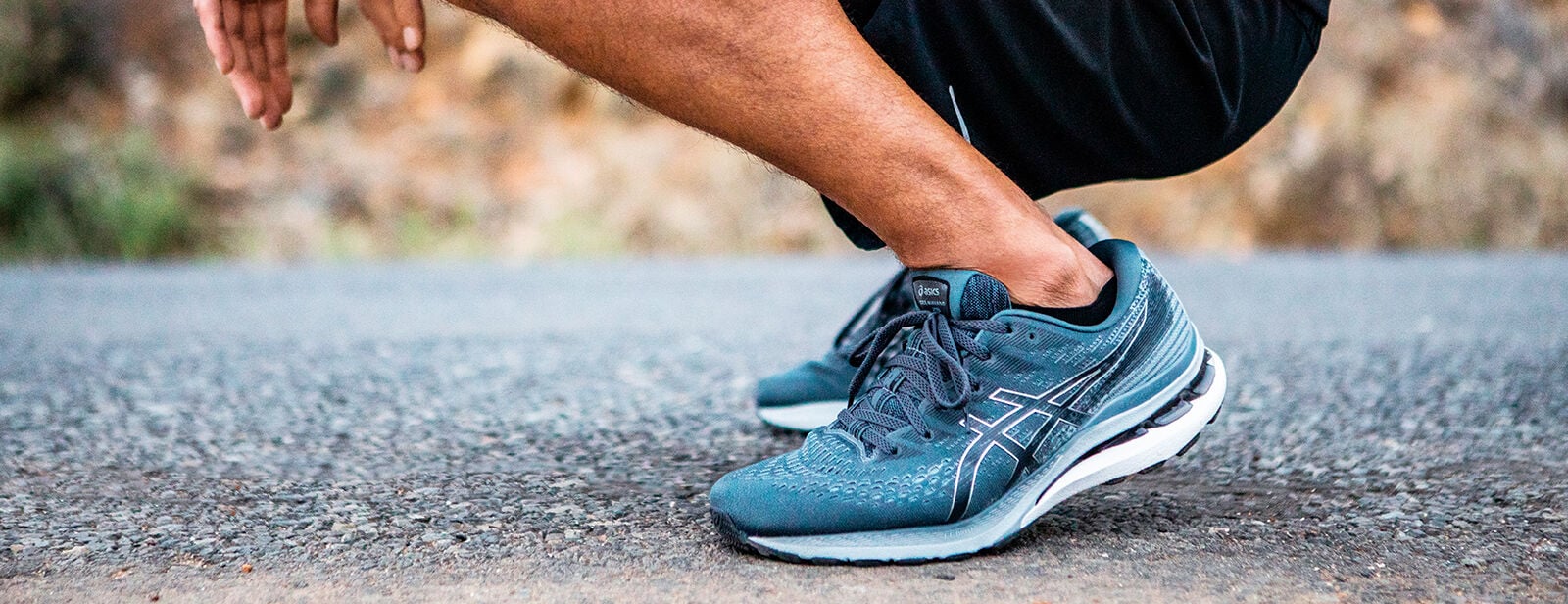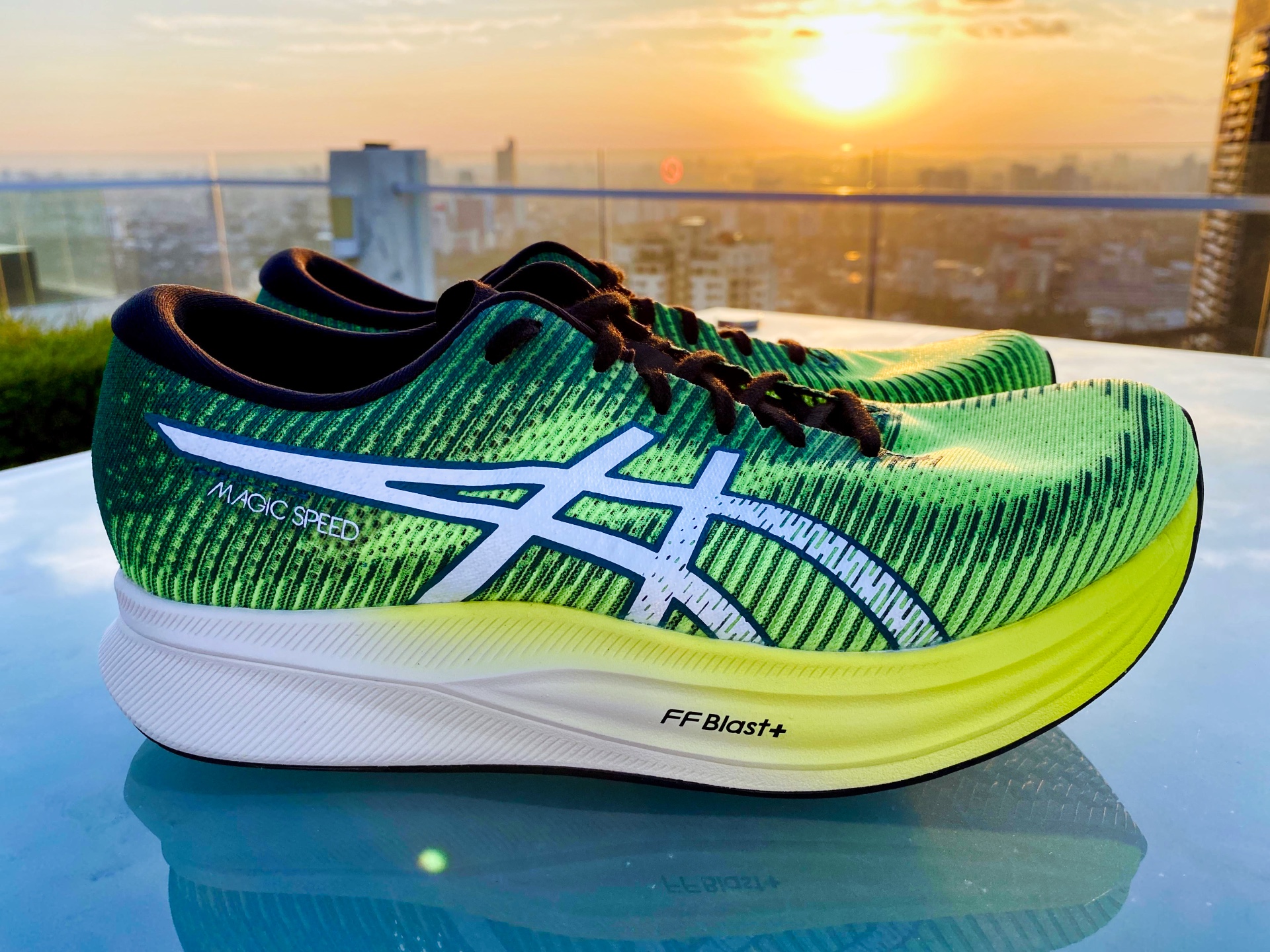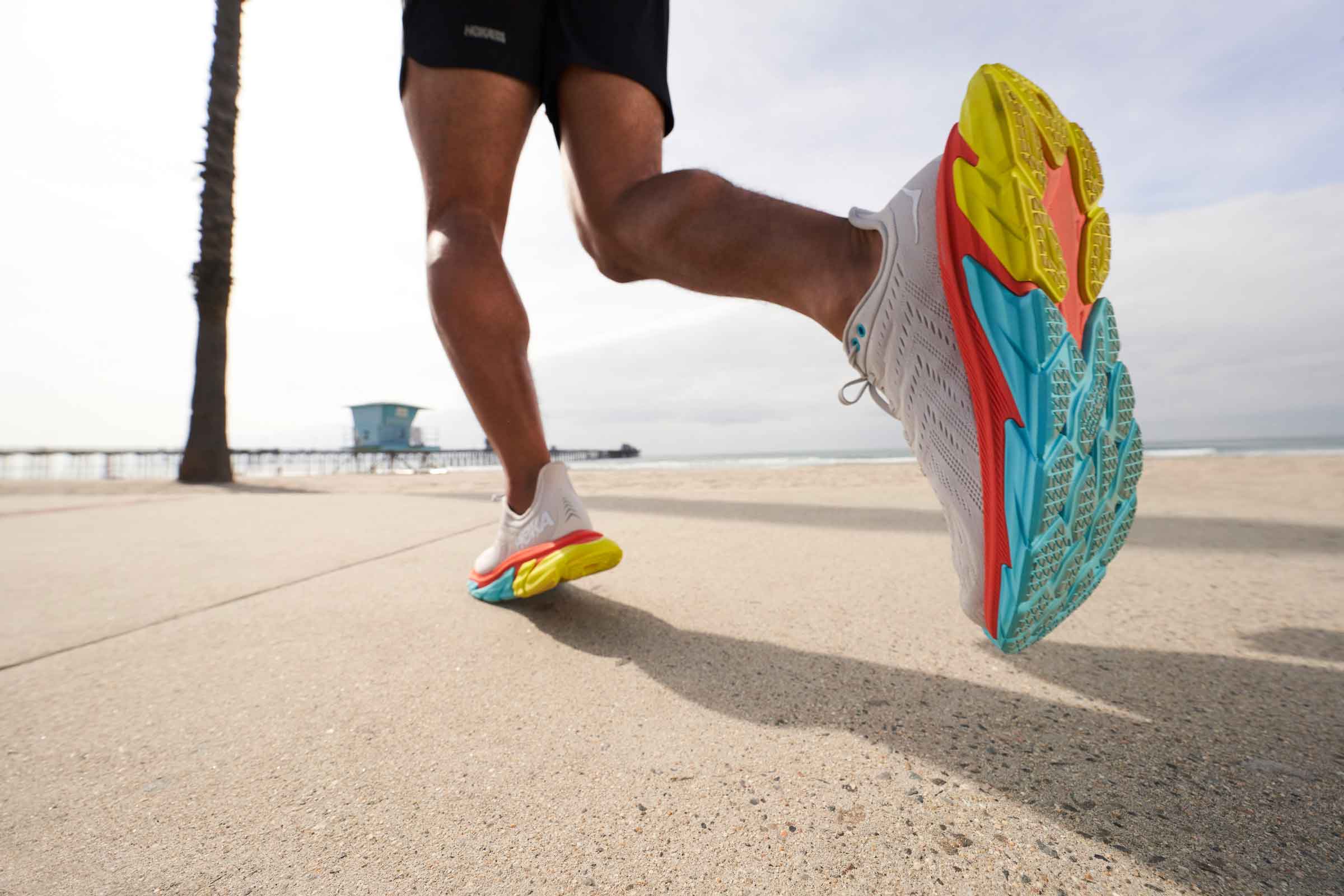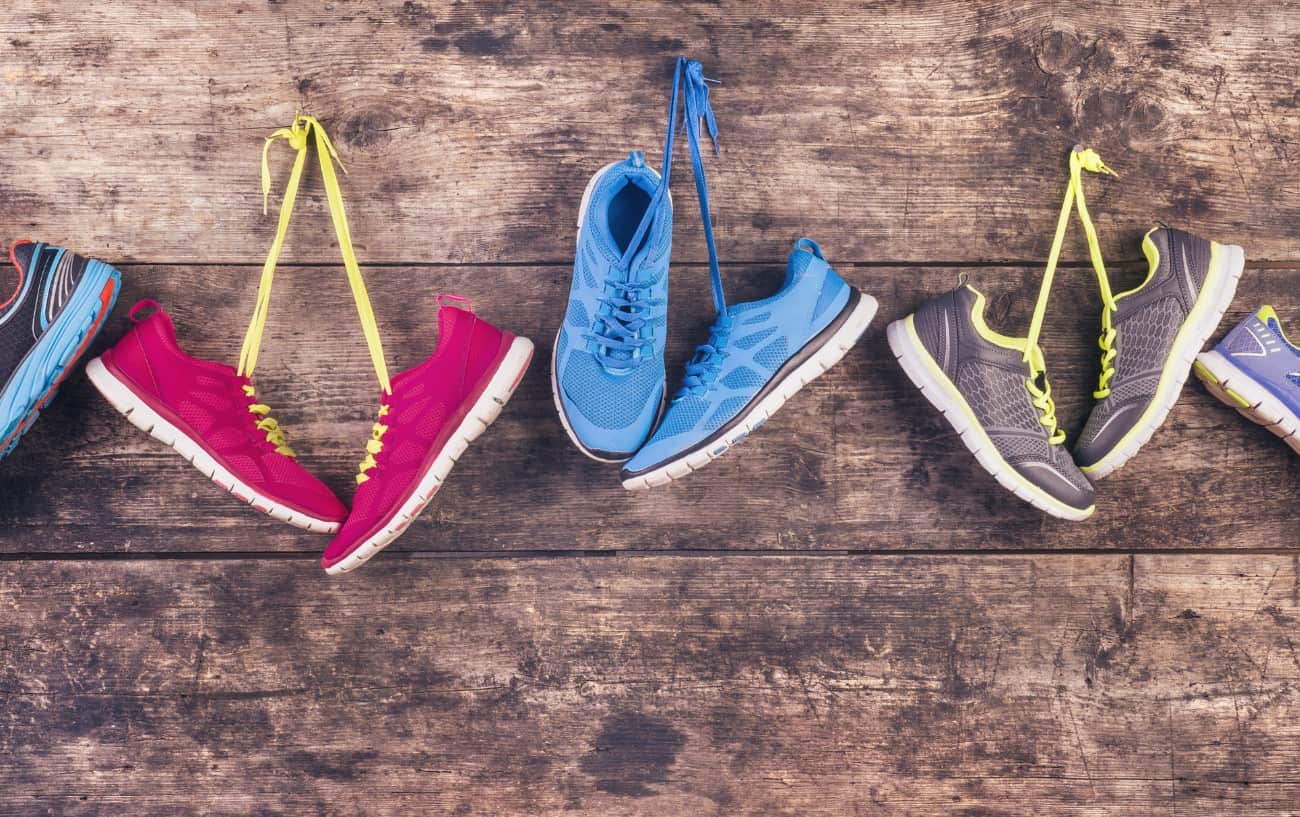

Featured
Why Rotate Running Shoes
Modified: August 19, 2023
Learn why it's important to regularly rotate your running shoes to prevent injuries and prolong their lifespan. Featured tips and advice for optimal performance.
Introduction
Welcome to the world of running! Whether you are a seasoned runner or just starting out on your fitness journey, one thing is certain – having a good pair of running shoes is essential. However, many runners underestimate the importance of rotating their running shoes. In this article, we will explore the reasons why rotating running shoes is crucial for your performance, comfort, and overall foot health.
Running involves repetitive impact on your feet, legs, and joints. Over time, this can lead to overuse injuries such as shin splints, stress fractures, and tendonitis. By rotating your running shoes, you can minimize the risk of developing these injuries and allow your body to adapt to different levels of cushioning, support, and stability.
Additionally, when you wear the same pair of running shoes for every run, the cushioning and support of the shoe gradually break down. This results in a loss of shock absorption and stability, which can impact your running form and increase the strain on your muscles and joints. By rotating your shoes, you can prolong the life of each pair, allowing them to maintain their cushioning and support for a longer period.
Furthermore, regular usage and exposure to moisture and sweat can cause your running shoes to deteriorate faster. Rotating your shoes gives them time to fully dry out between runs, preventing the growth of bacteria and unpleasant odors. It also allows the midsole foam to recover its original shape and responsiveness, ensuring optimal performance during your runs.
Lastly, rotating running shoes can greatly enhance your overall running performance. Different types of shoes may offer varying levels of cushioning, support, and responsiveness, allowing you to optimize your footwear choice for different training purposes. Whether you need a lightweight and flexible shoe for speed workouts or a more cushioned shoe for long distance runs, having a rotation of shoes gives you the flexibility to choose the right pair for the right occasion.
Now that we understand the importance of rotating running shoes, let’s delve deeper into the factors to consider, including the frequency of rotation, the types of shoes to rotate, and how to properly care for and store your running shoes. With these insights, you can ensure that your running shoes serve you well and keep you performing at your best, mile after mile.
Importance of Rotating Running Shoes
When it comes to running, having a reliable and comfortable pair of shoes is crucial. But did you know that rotating your running shoes is equally important? Rotating your shoes involves regularly swapping between multiple pairs instead of exclusively using one pair for all your runs. This practice offers several benefits that can greatly impact your running performance, prevent injuries, and increase the longevity of your shoes.
One of the main reasons to rotate running shoes is to prevent overuse injuries. When you run, your feet and leg muscles experience repeated impact and stress. Over time, this continuous stress can lead to overuse injuries such as shin splints, stress fractures, and tendonitis. By rotating your running shoes, you allow different muscles and tissues to bear the load, reducing the risk of developing these injuries. Additionally, rotating shoes can help prevent muscle imbalances that can occur when using the same pair of shoes exclusively.
In addition to injury prevention, rotating running shoes helps to maintain the cushioning and support provided by the shoes. Running shoes are designed with specific technologies and materials that offer shock absorption, stability, and comfort. However, over time, the cushioning and support of the shoes gradually break down, reducing their effectiveness. By rotating your shoes, you give each pair time to recover and regain its original shape and responsiveness, ensuring that you continue to receive the maximum benefits from your footwear.
Furthermore, rotating running shoes can extend the overall lifespan of each pair. As you use your shoes, they are exposed to moisture from sweat, terrain elements, and weather conditions. Moisture can cause the shoes to deteriorate faster, leading to a breakdown of materials and potentially compromising their performance. By rotating your shoes, you allow them to fully dry out between runs, reducing the chance of mildew, odors, and bacterial growth. Proper drying and airing out of the shoes also help the midsole foam to recover, maintaining its durability and cushioning.
Another advantage of rotating running shoes is the ability to enhance your running performance. Different types of running shoes are designed for specific purposes, such as speed workouts, long-distance runs, or trail running. By having a rotation of shoes, you can select the best pair for each training session or race. For example, you might choose a lightweight and flexible shoe for interval training, providing an optimal balance of cushioning and responsiveness. On the other hand, a more cushioned shoe might be preferred for longer runs, providing maximum comfort and support. The ability to choose the right pair based on the specific demands of each run can greatly enhance your overall performance.
In summary, rotating your running shoes is a practice that offers numerous benefits. It helps prevent overuse injuries, maintains shoe cushioning and support, increases shoe longevity, and allows you to optimize your running performance. By incorporating shoe rotation into your training routine, you can ensure that you’re taking care of your feet and maximizing the lifespan and performance of your running shoes, ultimately enhancing your running experience.
Preventing Overuse Injuries
One of the key reasons why rotating running shoes is important is to prevent overuse injuries. Overuse injuries are common among runners and occur when the body is subjected to repetitive stress without enough time for recovery. By regularly switching between different pairs of running shoes, you can minimize the risk of these injuries and ensure the long-term health and well-being of your feet and legs.
When you run, your feet and lower limbs absorb the impact of each step, placing a significant amount of stress on your muscles, tendons, and bones. When you consistently use the same pair of running shoes, these structures can become overworked and fatigued due to the repetitive nature of running. This can lead to overuse injuries such as shin splints, stress fractures, Achilles tendonitis, and plantar fasciitis.
Rotating your running shoes helps distribute the impact forces more evenly across different muscles and tissues. Each pair of running shoes has its own unique characteristics, including variations in cushioning, support, and stability. By switching between different pairs, you can vary the stress placed on specific areas of your feet and legs, allowing different muscles and tissues to recover and adapt to the demands of running.
Incorporating different types of shoes into your rotation can also help diversify the stress on your lower limbs. For example, you might have a pair of shoes with extra cushioning for longer runs, while another pair offers more stability for speed workouts. This variety in footwear allows your muscles and tendons to experience different forces and loading patterns, reducing the risk of developing imbalances or weaknesses that could lead to overuse injuries.
Furthermore, rotating running shoes can help correct any biomechanical anomalies or gait issues that you might have. Certain runners may have specific foot mechanics or imbalances that can affect their running form. By varying the shoes you wear, you can potentially address these issues by providing different levels of support and cushioning to different areas of your feet. This can help correct any abnormalities and reduce the likelihood of sustaining overuse injuries.
It’s important to note that while rotating running shoes can be beneficial in preventing overuse injuries, it is not a guaranteed solution. Other factors such as proper training techniques, gradual mileage increases, and listening to your body are also essential in injury prevention. However, incorporating a shoe rotation strategy into your training routine can significantly contribute to reducing the risk of overuse injuries and keeping you on the roads or trails for longer.
By rotating your running shoes, you can minimize the repetitive stress and strain on your feet and legs, reduce the risk of overuse injuries, and improve your overall running experience. So, don’t underestimate the power of shoe rotation in promoting foot health and injury prevention as you strive to reach your running goals.
Maintaining Shoe Cushioning and Support
One of the primary reasons to rotate your running shoes is to maintain their cushioning and support. Cushioning and support are essential components of running shoes that provide shock absorption, stability, and comfort during your runs. However, with regular use, the cushioning and support of running shoes gradually break down over time. By rotating your shoes, you can extend their longevity and ensure that you continue to receive the maximum benefits from their cushioning and support.
When you run, the cushioning materials in your shoes, such as EVA foam or air-filled pockets, absorb the impact of each footstrike. This helps to distribute the forces and reduce the strain on your muscles and joints. However, as you continue to use the same pair of shoes day after day, the cushioning materials begin to compress and lose their effectiveness. This results in diminished shock absorption and increased stress on your body, which can lead to discomfort and even injury.
By rotating your running shoes, you give each pair time to recover and restore their cushioning properties. When you alternate between different pairs of shoes, it allows the foam or cushioning materials in one pair to decompress and regain their original shape, ready to provide optimal shock absorption once again. This ensures that you continue to receive the necessary cushioning and protection during your runs, reducing the risk of developing overuse injuries.
In addition to cushioning, the support provided by running shoes is also crucial for maintaining proper running form. Running shoes are designed with features like medial posts, arch support, and stability technologies to provide stability and prevent excessive pronation or supination of the feet. However, over time, the support structures in the shoes can weaken or lose their effectiveness.
By rotating running shoes, you allow the support systems in each pair to recover and maintain their original shape. This ensures that the shoes continue to provide the necessary support and stability for your feet and lower limbs, reducing the risk of improper alignment and excessive stress on certain areas of your body. It also helps to promote a more efficient running gait and prevent potential biomechanical issues that could arise from prolonged use of the same pair of shoes.
Furthermore, rotating running shoes can help you identify when it’s time to retire a pair that has worn out. As you use your shoes, you become more attuned to their feel and performance. By having multiple pairs in rotation, you can compare how each shoe feels during your runs. If you notice a significant difference in cushioning or support between pairs, it may indicate that a particular pair has reached the end of its lifespan and needs to be replaced. This proactive approach allows you to avoid running in shoes that no longer provide the necessary cushioning and support, protecting your feet and minimizing the risk of injury.
By regularly rotating your running shoes, you can maintain the cushioning and support they offer. This ensures that you receive the optimal benefits of shock absorption, stability, and comfort during your runs. So, don’t underestimate the importance of shoe rotation in preserving the performance and longevity of your running shoes.
Increasing Shoe Longevity
Running shoes are a significant investment, both in terms of money and the impact they have on your running performance. Therefore, it is essential to take measures to prolong the longevity of your shoes. One way to achieve this is by rotating your running shoes. By regularly switching between different pairs, you can prevent premature wear and tear, extending the lifespan of each individual shoe and maximizing the value of your investment.
When you run, your shoes undergo constant stress and impact. The repeated pounding on hard surfaces, exposure to moisture and sweat, and the general wear and tear of everyday use can take a toll on your shoes. The cushioning materials, outsole, and upper all experience gradual breakdown over time.
By rotating your running shoes, you allow each pair to have enough time to recover and regain their shape. When a pair of running shoes rests between runs, the cushioning materials can decompress and regain some of their original thickness. This rejuvenation process helps to maintain the shoes’ ability to absorb shock and protect your feet and joints during your runs.
In addition, regularly alternating between different pairs of running shoes allows the outsole to wear more evenly. The outsole is the bottom part of the shoe that comes in contact with the ground, and it is often made of durable rubber or synthetic materials designed to provide traction and protection. By alternating between different pairs, you distribute the wear and tear across multiple shoes, preventing excessive wear on any one individual pair. This helps to prolong the life of the outsole and ensures that you have reliable traction and grip during your runs.
Furthermore, rotating running shoes can help extend the lifespan of the upper. The upper is the top part of the shoe that encloses and supports your foot. It is usually made of breathable mesh, synthetic materials, or a combination of both. With regular use, the upper can become stretched, worn, or damaged. By rotating your shoes, you allow the upper of each pair to rest and recover, minimizing the strain on the materials and prolonging their durability. Additionally, rotating shoes helps to reduce moisture buildup and allows for proper airing out, preventing potential odor issues and bacterial growth that can degrade the upper over time.
Proper care and maintenance of your running shoes while they are not in use is also essential in increasing their longevity. When you rotate your shoes, make sure to clean them after each run, removing any dirt, mud, or debris. Allow them to air dry completely before storing them in a cool, dry place away from direct sunlight. Avoid storing them in damp or humid environments, as this can lead to mold or mildew growth and accelerate the deterioration of the materials.
By regularly rotating your running shoes and taking proper care of them, you can significantly increase their lifespan and get the most out of your investment. This not only saves you money by reducing the frequency of shoe replacements but also ensures that you have reliable and comfortable shoes to support your running endeavors for an extended period.
Enhancing Running Performance
When it comes to running, performance is always a top priority. Whether you’re aiming to beat a personal record, complete a race, or simply run with more efficiency and enjoyment, having optimal running performance is key. One often overlooked factor that can greatly enhance your running performance is rotating your running shoes. By incorporating a shoe rotation strategy into your training routine, you can experience significant improvements in your overall running performance.
The first way in which rotating running shoes can boost performance is by allowing you to choose the right shoe for the right occasion. Not all runs are the same. Some days you may be focusing on speed workouts, while others may be dedicated to longer distance runs or recovery sessions. Different types of running shoes offer varying levels of cushioning, support, and responsiveness, catering to the specific demands of each type of run. By having a rotation of shoes, you can select the pair that best aligns with the training purpose of the day, thus optimizing your running experience and performance.
In addition, rotating your running shoes can help prevent your body from adapting and becoming too accustomed to one specific shoe. When you consistently use the same pair for every run, your feet and legs can develop a dependency on that particular shoe’s characteristics – such as its level of cushioning or support – and may struggle to adjust when using a different pair. By rotating your shoes, you introduce variety and force your body to constantly adapt to different shoes’ attributes. This adaptation can result in improved strength, stability, and efficiency, ultimately enhancing your running performance.
Another way in which rotating running shoes can improve performance is by allowing for proper recovery. When you run, your muscles and tissues endure stress and fatigue. By alternating between different pairs of shoes, you provide your body with more opportunity to recover. Each pair will have subtle differences in cushioning, support, and fit, which can relieve pressure on certain areas and reduce the risk of developing muscle imbalances or overuse injuries. Proper recovery allows your body to repair and strengthen, leading to better performance during subsequent runs.
Furthermore, rotating running shoes can introduce variety into your training, which is essential for personal growth and development as a runner. Different shoes may have varying levels of flexibility, responsiveness, or even specific features designed for different terrains. By regularly switching between shoes, you can explore different training surfaces, environments, and running styles. This variety keeps your workouts fresh and exciting, helping to prevent burnout and monotony. It challenges your body and mind in new ways, ultimately leading to improved performance and a well-rounded running experience.
Lastly, rotating running shoes can boost confidence and motivation. When you have multiple pairs of running shoes to choose from, it adds an element of excitement and anticipation to your training. The act of selecting your shoes for each run becomes an integral part of your pre-run ritual, setting a positive mindset and fueling your motivation. Feeling good about the shoes you’re wearing can give you that extra boost of confidence, allowing you to push harder and perform at your best.
Incorporating a shoe rotation strategy into your training routine can have a profound impact on your running performance. It allows you to select the right shoe for each training session, prevents your body from adapting too much to one shoe, promotes proper recovery, introduces variety, and boosts confidence and motivation. So, don’t underestimate the power of rotating running shoes in enhancing your overall running performance and helping you achieve your goals as a runner.
Factors to Consider When Rotating Running Shoes
When it comes to rotating your running shoes, there are several factors to consider to ensure that you maximize the benefits and effectiveness of the rotation. By taking these factors into account, you can create a rotation plan that suits your individual needs and preferences, ultimately enhancing your running experience and performance.
One important factor to consider is the frequency of rotation. How often should you switch between pairs of running shoes? While there is no fixed rule, it is generally recommended to rotate your shoes every 300-500 miles or every 3-6 months, depending on your running volume and the wear and tear of your shoes. However, it’s crucial to listen to your body and pay attention to any signs of discomfort or diminished cushioning. If you start feeling increased strain on your joints or notice significant wear on your shoes, it may be time to rotate them more frequently.
The types of shoes you incorporate into your rotation are equally important. It’s beneficial to have different types of shoes that serve different purposes. Consider having a lightweight pair for speed workouts, a cushioned pair for long-distance runs, and a trail running pair for off-road adventures. Each type of shoe offers unique features to cater to specific training needs. However, be cautious not to rotate between shoes that are too drastically different in terms of cushioning or stability, as this can potentially lead to discomfort or injury. Gradually transition between shoes with similar characteristics to allow your body to adapt to the differences.
The fit and condition of your shoes are also crucial factors to consider when rotating. Each pair of running shoes should fit properly and provide adequate support. Shoes that are too tight or too loose can cause discomfort and increase the risk of blisters or other foot issues. Additionally, make sure to regularly inspect the condition of your shoes. If you notice significant wear, compression of cushioning materials, or visible damage, it may be time to retire those shoes and consider getting a new pair to include in your rotation.
When planning your shoe rotation, take into account the surfaces you typically run on. If you often run on different terrains, such as roads, trails, or tracks, it may be beneficial to have shoes specifically designed for each surface. This ensures that you have the appropriate level of traction, grip, and durability for the specific demands of each terrain. Rotating between shoes for different surfaces also allows for more targeted training and reduces the chances of developing overuse injuries from repetitive strain on specific muscle groups or joints.
Proper care and storage of your running shoes are essential factors in maintaining their longevity and performance. After each run, make sure to clean your shoes and allow them to dry thoroughly before storing them. Store your shoes in a cool, dry place away from direct sunlight or excessive heat. Avoid leaving them in damp environments, as this can lead to the growth of mold or bacteria. By taking good care of your shoes, you ensure that they are in optimal condition for your next run and prolong their lifespan.
Lastly, don’t forget to listen to your body. Pay attention to any discomfort, pain, or changes in your running form. If you notice any issues, adjust your rotation plan accordingly. Your body is unique, and what works for others may not necessarily work for you. Experiment with different shoes and rotation schedules to find what best suits your individual needs and preferences.
By considering these factors – frequency of rotation, types of shoes, fit and condition of shoes, terrain, proper care, and listening to your body – you can create a shoe rotation plan that enhances your running experience, improves your performance, and protects your feet and legs from overuse injuries. So, take the time to plan your shoe rotation wisely and enjoy the benefits of having a varied and effective shoe lineup for your runs.
Frequency of Rotation
When it comes to rotating your running shoes, determining the frequency of rotation is an important consideration. While there is no one-size-fits-all answer, there are general guidelines that can help you establish an effective rotation schedule. By understanding these guidelines and being attuned to your body’s needs, you can optimize the benefits of rotating your running shoes.
The frequency of rotation depends on various factors, including your running volume, the wear and tear on your shoes, and your body’s response to different levels of cushioning and support. As a general rule of thumb, it is recommended to rotate your running shoes every 300-500 miles or every 3-6 months. However, it’s important to note that these are just rough estimates, and individual circumstances may vary.
One primary consideration is your running volume. If you are a high-mileage runner, covering a significant distance on a regular basis, you may need to rotate your shoes more frequently. The repetitive impact and stress on your shoes can cause the cushioning materials to compress and lose their effectiveness faster. If you start feeling increased strain on your body or notice a significant decrease in cushioning, it may be a sign that it’s time to rotate your shoes sooner than expected.
Another factor to consider is the wear and tear on your shoes. Regularly inspect your shoes for visible signs of wear, such as worn-out treads or compression of cushioning materials. Additionally, pay attention to any discomfort or pain you may experience during your runs. If you notice significant wear or discomfort, it’s a clear indication that it’s time to rotate your shoes. Ignoring these signs can increase the risk of overuse injuries and negatively impact your running performance.
It’s also important to listen to your body and be aware of how the shoes feel on your feet. Everyone has individual preferences and needs when it comes to the level of cushioning and support they require. Some runners may find that they need to rotate shoes more frequently to maintain optimal comfort and performance, while others may find that they can go longer between rotations. Factors such as your body weight, running style, and foot mechanics can also influence how quickly your shoes wear down and how often they need to be rotated.
Keep in mind that shoe rotation is not an exact science, and it requires a degree of trial and error to find what works best for you. Pay attention to the feedback your body provides and adjust your rotation schedule accordingly. If you start to feel discomfort, fatigue, or a decrease in performance, try rotating your shoes more frequently to see if it makes a difference.
Remember, shoe rotation is not only about extending the lifespan of your shoes but also about ensuring that you are running with optimal cushioning and support. It is better to err on the side of caution and rotate your shoes a bit earlier rather than later to prevent the risk of injury. By finding the right frequency of rotation for your individual needs, you can maintain the integrity of your shoes, protect your body from overuse injuries, and continue running at your best.
Types of Shoes to Rotate
When it comes to rotating your running shoes, it’s important to consider the different types of shoes to include in your rotation. By incorporating a variety of shoes with specific features and characteristics, you can cater to the diverse demands of your training and optimize your overall running experience.
1. Lightweight Shoes: Lightweight running shoes are designed for speed and agility. They are typically minimalistic in structure, providing a light and flexible feel. These shoes are ideal for speed workouts, intervals, and races where you need to maximize your performance. The minimal cushioning and low heel-to-toe drop in lightweight shoes allow for a more efficient stride and a faster turnover rate.
2. Cushioned Shoes: Cushioned running shoes provide ample cushioning and shock absorption. They are designed to minimize the impact on your feet and joints, making them a great choice for longer-distance runs or for runners seeking additional comfort. Cushioned shoes often have thicker midsole foam and increased cushioning in the heel to support a softer landing.
3. Stability Shoes: Stability running shoes are ideal for runners who overpronate, meaning their feet roll excessively inward when running. These shoes feature additional support and stability features, such as medial posts or firmer midsoles, to help correct overpronation and enhance your running gait. Stability shoes provide a good balance between cushioning and support for runners with mild to moderate pronation issues.
4. Trail Shoes: If you enjoy off-road running or traversing rugged terrains, trail running shoes are a must-have in your rotation. These shoes are built with aggressive outsoles that provide exceptional traction and grip on uneven surfaces, such as trails, gravel, or muddy paths. Trail shoes often have protective features, including reinforced toe caps and rugged uppers, to shield your feet from debris and potential hazards.
5. Racing Flats: Racing flats are lightweight, minimalistic shoes specifically designed for racing events. They offer little cushioning but are built to be lightweight and responsive, allowing you to achieve maximum speed on race day. Racing flats are generally recommended for short to moderate distances or runners with efficient running mechanics seeking a competitive edge.
6. Recovery Shoes: While not traditionally considered a separate category, recovery shoes are worth mentioning as part of your rotation. These shoes are designed with extra cushioning and support, providing enhanced comfort and aiding in recovery after intense workouts or long runs. Recovery shoes are meant for slower, easy-paced runs where the focus is on recuperation rather than pushing performance limits.
When selecting shoes for rotation, consider your specific training needs, running goals, and terrain preferences. Assess your biomechanics, foot type, and any specific concerns or preferences you have regarding cushioning, support, and fit. It’s important to try on different shoes and find the models that feel most comfortable and supportive to you, as everyone’s feet are unique.
Remember to transition gradually between shoes with different features to allow your body to adapt. Abrupt changes in cushioning, stability, or shoe drop can potentially lead to discomfort or injury. Gradually incorporating new shoes into your rotation allows your muscles, tendons, and feet to adjust to the differences, reducing the risk of strain or imbalance.
By including a variety of shoes in your rotation, you can optimize your training and improve your overall running performance. Select shoes that meet your specific needs and preferences, and don’t be afraid to experiment and explore new shoe options as you progress in your running journey.
Proper Care and Storage of Running Shoes
Proper care and storage of your running shoes are essential for maintaining their performance, longevity, and overall quality. By following some simple guidelines, you can ensure that your shoes stay in optimal condition, providing you with reliable comfort and support throughout your runs. Here are some key practices to consider for the proper care and storage of your running shoes.
1. Clean your shoes regularly: After each run, remove any dirt or debris from your shoes by gently brushing them or using a soft cloth. If your shoes are particularly dirty, you can rinse them with lukewarm water and mild soap. Avoid using harsh chemicals or abrasive materials that may damage the shoe’s materials or affect their performance.
2. Allow your shoes to air dry: After cleaning or if your shoes get wet, it’s important to allow them to air dry completely before storing them. Avoid exposing them to direct sunlight or excessive heat sources, as this can cause the materials to warp or deteriorate. Stuffing them with crumpled paper or using shoe trees can help maintain their shape and aid in the drying process.
3. Store your shoes in a cool, dry place: Find a suitable storage area for your running shoes that is cool, dry, and well-ventilated. Avoid storing them in damp or humid areas, such as basements or garages, as this can promote the growth of mold or mildew. If possible, keep them in a closet or shoe rack away from direct sunlight to prevent any discoloration or damage to the materials.
4. Rotate your shoes: As you rotate your running shoes during your training, consider rotating the shoes you have in storage as well. This helps to prevent excessive wear on any one pair and ensures that all your shoes are used regularly. Remember to give each pair ample time to fully dry and air out before storing them again.
5. Avoid leaving your shoes in enclosed bags or containers: While it may be tempting to toss your shoes into a bag or container after a run, it’s best to let them breathe. Enclosed spaces can trap moisture, leading to the growth of bacteria and unpleasant odors. Opt for open storage solutions that allow for air circulation, such as shoe racks or cubbies.
6. Use shoe deodorizers: Running shoes can often develop odors over time due to sweat and moisture. To keep them fresh-smelling, consider using shoe deodorizers or odor absorbers. There are various options available, from charcoal sachets to specialized shoe deodorizing sprays. These products can help eliminate unwanted smells and keep your shoes smelling clean and pleasant.
7. Replace worn-out or damaged shoes: Regularly inspect your running shoes for signs of wear and tear. If you notice significant wear on the outsole, compression of cushioning materials, or any structural damage to the shoe, it may be time to replace them. Continuing to run in worn-out or damaged shoes can increase the risk of discomfort, injuries, and decreased performance.
By following these practices, you can extend the lifespan of your running shoes and maintain their quality and performance. Proper care and storage not only ensure that your shoes stay in good condition, but also contribute to your overall comfort and running experience. So, give your running shoes the care they deserve, and they will continue to support you mile after mile.
Conclusion
In conclusion, rotating your running shoes is a simple yet impactful practice that can greatly benefit your running performance, foot health, and overall running experience. By regularly switching between different pairs of shoes, you can prevent overuse injuries, maintain optimal cushioning and support, increase the longevity of your shoes, and enhance your running performance.
Rotating your running shoes helps to distribute the impact forces and stress more evenly across different muscles and tissues, reducing the risk of overuse injuries such as shin splints, stress fractures, and tendonitis. It also allows the cushioning and support of your shoes to recover and regain their original effectiveness, ensuring that you receive the maximum benefits from your footwear.
Moreover, rotating your shoes prolongs their lifespan by evenly wearing down the outsoles and reducing the chances of premature deterioration. By giving each pair adequate time to rest and recover, you prevent moisture buildup and ensure that your shoes stay fresh, odor-free, and in optimal condition.
Furthermore, rotating running shoes allows you to choose the right shoe for the right occasion, optimizing your training sessions and races. Different types of shoes offer varying levels of cushioning, support, and responsiveness, catering to the specific demands of each run. This variety not only enhances your performance but also adds fun and excitement to your training routine.
When developing a rotation plan, consider factors such as the frequency of rotation, the types of shoes to include, the fit and condition of your shoes, and the surfaces you typically run on. Adapting your rotation schedule based on your running volume, wear and tear, and personal preferences will ensure that you receive the most benefits from alternating between your shoes.
Lastly, proper care and storage of your running shoes play a vital role in maintaining their performance and longevity. Clean your shoes regularly, allow them to air dry fully, store them in a cool and dry place, and replace worn-out or damaged pairs when necessary. These practices will help ensure that your shoes are always in excellent condition, ready to support you on your runs.
Incorporating shoe rotation and taking care of your running shoes may require some extra effort, but the benefits far outweigh the investment. By implementing these practices, you can enhance your running performance, reduce the risk of injuries, and enjoy many more miles of comfortable and enjoyable running. So, start rotating your running shoes and experience the remarkable difference it can make in your running journey.
